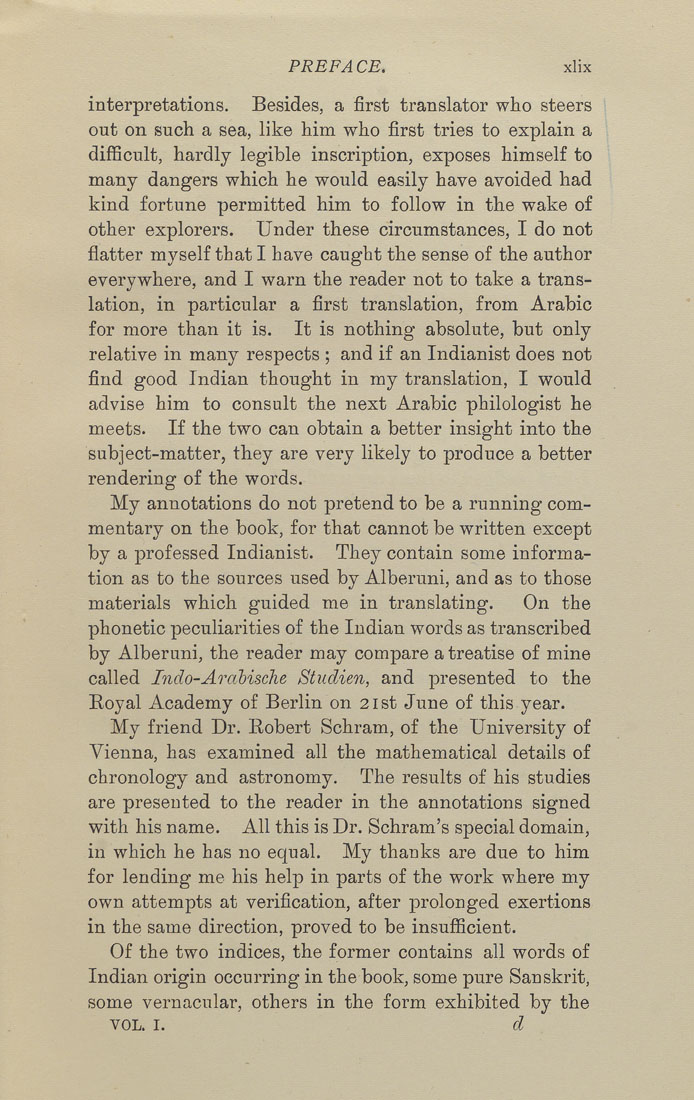Bīrūnī, Muḥammad ibn Aḥmad, Alberuni's India (v. 1)
(London : Kegan Paul, Trench, Trübner & Co., 1910.)
|
||
|
|
|
|
| Page xlix |

PREFA CE. xlix interpretations. Besides, a first translator who steers out on such a sea, like him who first tries to explain a difficult, hardly legible inscription, exposes himself to many dangers which he would easily have avoided had kind fortune permitted him to follow in the wake of other explorers. Under these circumstances, I do not flatter myself that I have caught the sense of the author everywhere, and I warn the reader not to take a trans¬ lation, in particular a first translation, from Arabic for more than it is. It is nothing absolute, but only relative in many respects ; and if an Indianist does not find good Indian thought in my translation, I would advise him to consult the next Arabic philologist he meets. If the two can obtain a better insight into the subject-matter, they are very likely to produce a better rendering of the words. My annotations do not pretend to be a running com¬ mentary on the book, for that cannot be written except by a professed Indianist. They contain some informa¬ tion as to the sources used by Alberuni, and as to those materials which guided me in translating. On the phonetic peculiarities of the Indian words as transcribed by Alberuni, the reader may compare a treatise of mine called Indo-Arahische Studien, and presented to the Eoyal Academy of Berlin on 21st June of this year. My friend Dr. Eobert Schram, of the University of Vienna, has examined all the mathematical details of chronology and astronomy. The results of his studies are presented to the reader in the annotations signed with his name. All this is Dr. Schram's special domain, in which he has no equal. My thanks are due to him for lending me his help in parts of the work where my own attempts at verification, after prolonged exertions in the same direction, proved to be insufficient. Of the two indices, the former contains all words of Indian origin occurring in the book, some pure Sanskrit, some vernacular, others in the form exhibited by the VOL. I. d |
| Page xlix |







